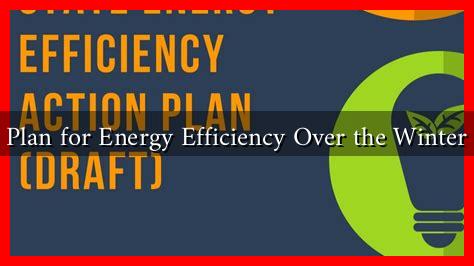-
Table of Contents
- How to Plan for Energy Efficiency Over the Winter Months
- Understanding the Importance of Energy Efficiency in Winter
- Conducting an Energy Audit
- Implementing Energy-Efficient Heating Solutions
- Enhancing Home Insulation and Sealing
- Utilizing Renewable Energy Sources
- Behavioral Changes for Energy Efficiency
- Conclusion
How to Plan for Energy Efficiency Over the Winter Months
As winter approaches, the need for energy efficiency becomes increasingly critical. With rising energy costs and environmental concerns, planning for energy efficiency during the colder months can lead to significant savings and a reduced carbon footprint. This article will explore practical strategies to enhance energy efficiency in your home during winter, supported by statistics and case studies.
Understanding the Importance of Energy Efficiency in Winter
Winter can be a challenging time for energy consumption. According to the U.S. Energy Information Administration (EIA), residential energy consumption for heating can account for up to 40% of a household’s total energy use. This statistic underscores the importance of implementing energy-efficient practices to mitigate costs and environmental impact.
Conducting an Energy Audit
Before making any changes, it’s essential to understand where your home stands in terms of energy efficiency. An energy audit can help identify areas for improvement. Here are some steps to conduct an effective energy audit:
- Check Insulation: Inspect your attic, walls, and floors for adequate insulation. Poor insulation can lead to significant heat loss.
- Examine Windows and Doors: Look for drafts around windows and doors. Consider using weather stripping or caulking to seal leaks.
- Assess Heating Systems: Evaluate the efficiency of your heating system. Older systems may require replacement or maintenance.
For a more comprehensive assessment, consider hiring a professional energy auditor. They can provide detailed insights and recommendations tailored to your home.
Implementing Energy-Efficient Heating Solutions
Once you have a clear understanding of your home’s energy profile, it’s time to implement energy-efficient heating solutions. Here are some options to consider:
- Upgrade to a Programmable Thermostat: A programmable thermostat can help manage heating schedules, reducing energy use when you’re not home.
- Invest in Energy-Efficient Heating Systems: Consider upgrading to a high-efficiency furnace or heat pump. According to the U.S. Department of Energy, modern systems can be up to 30% more efficient than older models.
- Utilize Space Heaters Wisely: For rooms that are used less frequently, space heaters can provide targeted heating without the need to heat the entire home.
Enhancing Home Insulation and Sealing
Improving insulation and sealing can drastically reduce heat loss. Here are some effective methods:
- Insulate Attics and Basements: Adding insulation in these areas can prevent heat from escaping.
- Seal Ducts: Leaky ducts can waste a significant amount of energy. Use mastic sealant or metal tape to seal any leaks.
- Install Storm Windows: Storm windows can provide an additional layer of insulation, reducing heat loss through windows.
Utilizing Renewable Energy Sources
Incorporating renewable energy sources can further enhance energy efficiency. Solar panels, for instance, can provide supplemental energy during the winter months. A case study from the National Renewable Energy Laboratory (NREL) found that homes with solar panels can reduce their energy bills by up to 50% during winter.
Behavioral Changes for Energy Efficiency
Sometimes, simple behavioral changes can lead to significant energy savings. Consider the following tips:
- Dress Warmly Indoors: Wearing warmer clothing can allow you to lower your thermostat setting without sacrificing comfort.
- Use Natural Light: Open curtains during the day to let in sunlight, which can help warm your home naturally.
- Limit Heat Loss: Close doors to unused rooms and cover windows at night to retain heat.
Conclusion
Planning for energy efficiency over the winter months is not only beneficial for your wallet but also for the environment. By conducting an energy audit, implementing efficient heating solutions, enhancing insulation, utilizing renewable energy, and making simple behavioral changes, you can significantly reduce your energy consumption. As winter approaches, take the time to assess your home and make the necessary adjustments to ensure a warm, comfortable, and energy-efficient season.
For more information on energy efficiency, visit the U.S. Department of Energy’s Energy Saver website.

